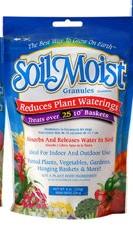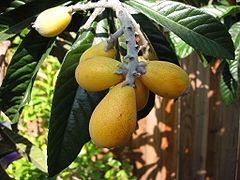
Now and then, I put together a starter kit for folks interested in trying bokashi; nothing elaborate, just a nested-bucket set with spigot, a bag of EM bokashi bran, a potato masher, and really simple instructions. (Usually one of my Tidy Cat bucket-sets, as I think the press-to-seal lids are a decent compromise between ease and security, but really, it's whatever I have on hand.)
I try not to ask after those buckets too often, but when my friend in the multi-generation-household offered to return their buckets to me, I had to know! Turns out one of the older members of the family found a new way to fail a bucket.
#11 Hide the thing! Immediately after adding a large quantity of fresh waste, including “heavy” items (meats, dairies, oils) but before the addition of any bokashi bran. And hide it so well that the reservoir cannot be tapped, so the less-than-optimal leachate backs up into the fermentation chamber.
In a word,
blecch.
Suppose I ought to provide a few numbers to go with that one, yeah? Let's see...
#1. Skipping the drain.
Commercial bokashi buckets have a false floor, mesh sieve, or grate above a reservoir--but when folks decide to try DIY, too many decide not to bother with that bit. Yes, it is possible to ferment dryish kitchen waste without a reservoir, but it's not as simple as all that.
#2. Inadequate seal.
The microbes in EM bokashi, and in most of the homebrew/silo bucket models, are selected to work in the absence of fresh air. By contrast, the random microbes already present in and on food wastes do just fine in an oxygen-rich environment. Bokashi works on a dominance principle--the microbes we want need to out-grow the others, so we need to provide them the right conditions for that. Lids matter! As does the fit between your nested buckets, if you're using them, and the spigot. Not to mention, an improperly seated spigot will lead to bokashi juice escaping, a scenario to be avoided at all costs.
#3. Not enough bran.
I haven't heard of anyone completely forgetting bran in a bucket, but many neglect to add it at least daily, or with every inch* of food waste added, or the extra “scoop for luck” I think is advisable with heavy or strongly odorous items. My rule of thumb: if it smells bad, add more bran! And see #5 below.
#4. Forgetting to tap.
As with the reservoir issue above, this is one of those steps people don't always understand is required, or believe is as frequently necessary as it can be, until it's too late. As in, when their neighbors are complaining about the stench. Bokashi juice, or whatever you care to call bucket leachate, should never be allowed to back up into the fermentation chamber, and really ought to be drained twice a week or so regardless of volume (though, depending on your bucket contents, you might have almost none, or have one so rich with microbes it will keep fermenting until your bucket is ready for the next stage, with no ill effects from sitting. It's just...how do you tell, and do you want to risk it? Simpler to drain!)
#5. Unmashed bucket-stuffs.
I include a potato masher with my bokashi starter kits. It's not that they work any better than some other tool, but they're easy to acquire, cheap, and washable. Mashing serves three purposes: it excludes air, expresses excess moisture, and increases contact between the inoculant (bran or liquid) and the foodstuffs.
My local bokashi retailer, on the other hand, recommends stirring the top layer of food wastes to ensure appropriate contact between the microbial inoculant and foodstuffs, so I assume their kits include some sort of spoon. Not sure where they stand on moisture and pressure, but I do know there have been some issues with folks mashing their foodstuffs a bit too hard, and damaging the grates... Well, let's call this “unmixed” for them.
The next few ways to fail could, I suppose, all be lumped into one point: adding things you're not supposed to. But I thought they each deserved their own numbers. There aren't too many things you
can't add to your bokashi bucket, but once you've gotten used to diverting all your kitchen waste to one spot, it can be hard to remember what doesn't go there! Generally, however, quick ways to fail your bucket will include:
#6. Adding synthetics/chemicals.
No synthetics ever belong in the bokashi bucket. No plastic**, no styrofoam, no silicone, no odd chemicals. And if you've used a paper towel to mop up the cleaning compound from your stove, that paper towel is now ineligible for the bokashi. (The usual retailer recommendation is to not put
any paper in the bucket, but in small pieces it won't hurt, it just takes up space so your buckets fill up faster. Don't add it if that's a concern so long as you have some other landfill-diversion tactic for the stuff.)
#7. Drowning the bokashi: adding liquids
Our major microbial triad and all its fellows have a preferred habitat, and it's not in a bucket at 100% humidity! (Can't blame the things. -G-) Pour liquids down the drain or dilute and add to a compost pile, or dilute still further and use to water plants, depending on what those liquids might be, but as a rule, if it's pourable it's not for bokashi-ing.
Of course, if you have a stew or some split pea soup past edibility, those are close enough to solid that they're getting bucketed, no question. Add extra of whatever microbial inoculant you're using, mash or mix is up well, and tap the reservoir an extra time or two. But the leftover turkey broth? That gets fed to your drain if you have no better options.
#8. The opposing faction: molds/spoiled materials.
A really healthy bucket can overcome a small quantity of mold, but not much. If it's slimy or turning colors--
any colors other than simple aging-past-edibility yellow or exposed-to-air brown--it's not for the bokashi bucket.
#9. Bugs!
If you're tossing that bag of fruit because it's got fruitflies, it does NOT go in your bokashi bucket. The things will spawn in there, and it's nasty. Uber-recyclers might freeze the material first, to kill the bugs, and then ferment it; I'm likely to toss it into the bamboo thicket for nature's clean-up crew, or into the apartment's outdoor compost bin, with several inches of dried leaves for topping.
#10. Abandoning the bucket.
Bokashi is relatively stable, but not eternally pickled. At some point, it does have to be extracted from the bucket, or items must be added to it, or it will rot. And you don't want to know what that's like. Really. Don't believe me? Ask
Bentley.
And a bonus, unnumbered because it's not really under your control:
#X. Bad bran/inoculant.
These things happen. The EM-1 might have frozen during storage or shipping; the bran might have been contaminated; the bags, bottles, or boxes in which your preferred retail packages things might have picked up some microbes transferred from an inadequately cleaned container formerly used to transport garbage. Who knows?
EM bokashi bran should smell like one or more of its source materials and near relatives: Bran, molasses, yeast, vinegar. A hint of alcohol is possible, particularly in liquid inoculant, not ideal but okay. Any EM product should look like its source materials, too--liquid EM is brown, typically darker than cider vinegar but lighter than molasses; EM bokashi bran is visibly identifiable as bran or a mixture of bran and hulls or whatever, and either dry or damp-looking, in which latter case it may have some white acetobacter growth. If your bran is any other color, it should not be used! Blue, red, green, and black are not acceptable.
So, okay, the post-title's a bit misleading. I don't suppose you'd need to work your way through all ten-plus to fail a bucket--but I'd love to see--from a distance—the results if someone were to try!
For the rest of us, let's call this ten-plus things to avoid lest our buckets fail.
Happy bucketing,
DSF
[image from my files, sorry, no credit noted. If you know, please tell me!]











.bmp)

















